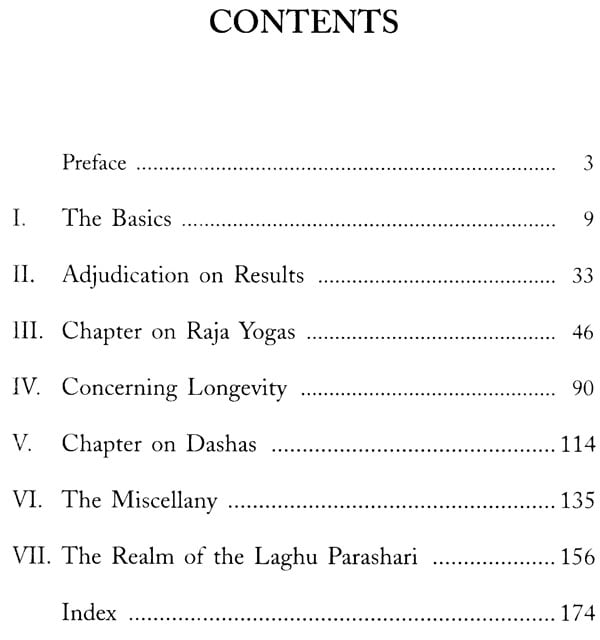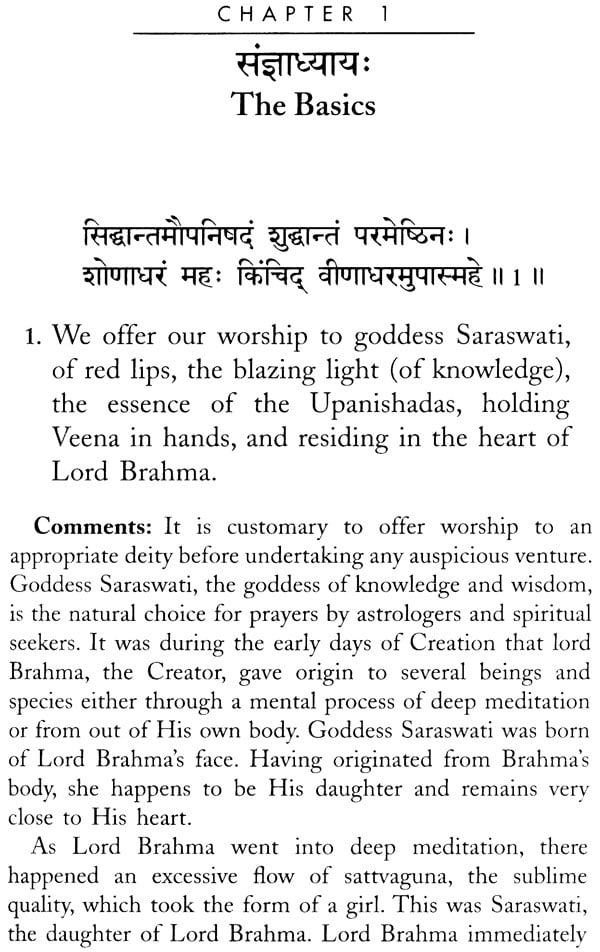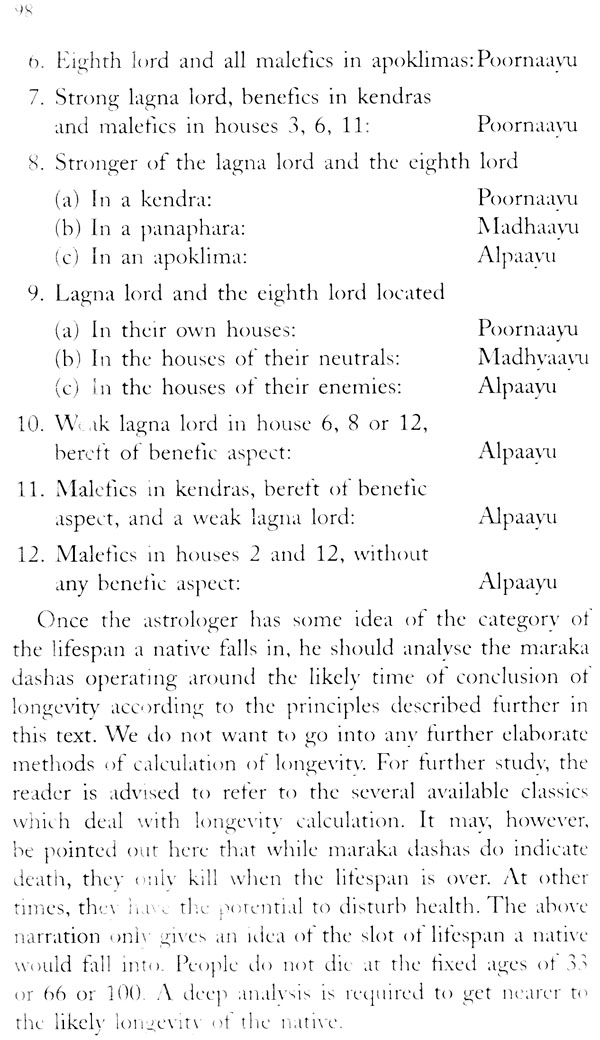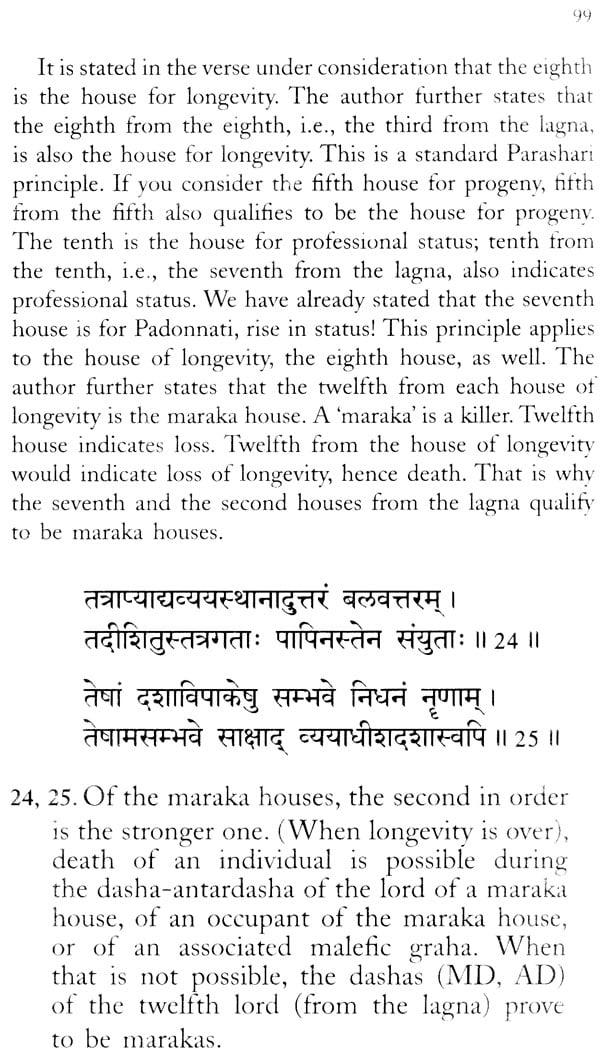
Laghu Parashari - An Exquisite Exploration of Vimshottari Dasha
Book Specification
| Item Code: | NAX463 |
| Author: | K S Charak |
| Publisher: | Uma Publications |
| Language: | Sanskrit and English |
| Edition: | 2020 |
| ISBN: | 9789381769065 |
| Pages: | 176 |
| Cover: | PAPERBACK |
| Other Details | 8.50 X 5.50 inch |
| Weight | 240 gm |
Book Description
This classic lays emphasis on recognising grahas which are functional benefices and functional malefic, the (yoga-) karakas and maracas, and then identifying the various yogas which the different grahas form. The yogas in their unblemished form give highly benevolent results while those which are blemished by adverse house lordship prove to be less effective in yielding good results. The static promise inherent in the chart, indicated by the various yogas, finds fruition when the dynamic factor of appropriate dashas comes into operation. Extremely subtle and refined principles of dash interpretation find mention in this classic. This classic only contains yogas which are based on the lordship of different houses and does not mention scores of other yogas which are formed by specific disposition of different grahas independent of their house lordship. This is not to say that those yogas are not important. The author makes it clear in the very beginning that basic material not included in this classic may be learnt from other standard books on astrology. Principles about the determination of longevity and the dash as indicating the time of death are relevant as far as the feasibility of reaping the effects of the yogas during the lifetime of the native is concerned.
It is important to realise that this classic explains the operation of dashas in a manner that no other available classic does. The shlokas in the body of the text not only contain rich astrological material but also indicate the excellence of the Sanskrit language wherein brevity conceals vastness. A wealth of 'astrological wisdom lies enshrined in a mere forty-two verses. Some of the shlokas are liable to multiple interpretations and cl. very careful attention has to be paid to the construction of each verse and the meaning it conveys.
Almost all the shlokas in the Laghu Parashari find place in the popular south Indian classic, the fataka Chandrika, which additionally contains material regarding the principles of matching of charts for the purpose of marriage. Another popular classic on astrology, the Phaladeepika of Mantreshwara, picks up twelve shlokas from the Laghu Parashari to include in its chapter on dash interpretation (Ch. 20; shlokas 43 to 54). Savants of astrology agree that this small classic contains profound principles of dash interpretation which no serious student of astrology can afford to ignore.
This translation of and commentary on the Laghu Parasail has been prepared with the intention to provide rich and authentic material on Vedic astrology to the English-knowing seeker of astrological wisdom. All shlokas have been throughway explained and numerous examples of known individuals have been provided in order to elucidate the principles.
In the interpretation of the Sanskrit text, we have taken the help and guidance of Dr. Suresh Chandra Mishap, an accomplished Sanskrit scholar and author. Our friend from USA, Christine Fournier, a Vedic astrologer herself, took up the burden of subediting this text. Rajeev Jhansi gave shape to my typed text and Vinay Aditya designed the cover page. Yashwant Rawat as usual has done a great job inserting the horoscopic charts and carrying out numerous small but significant corrections and modifications where indicated. I remain beholden to all these friends of mine.
Book's Contents and Sample Pages












